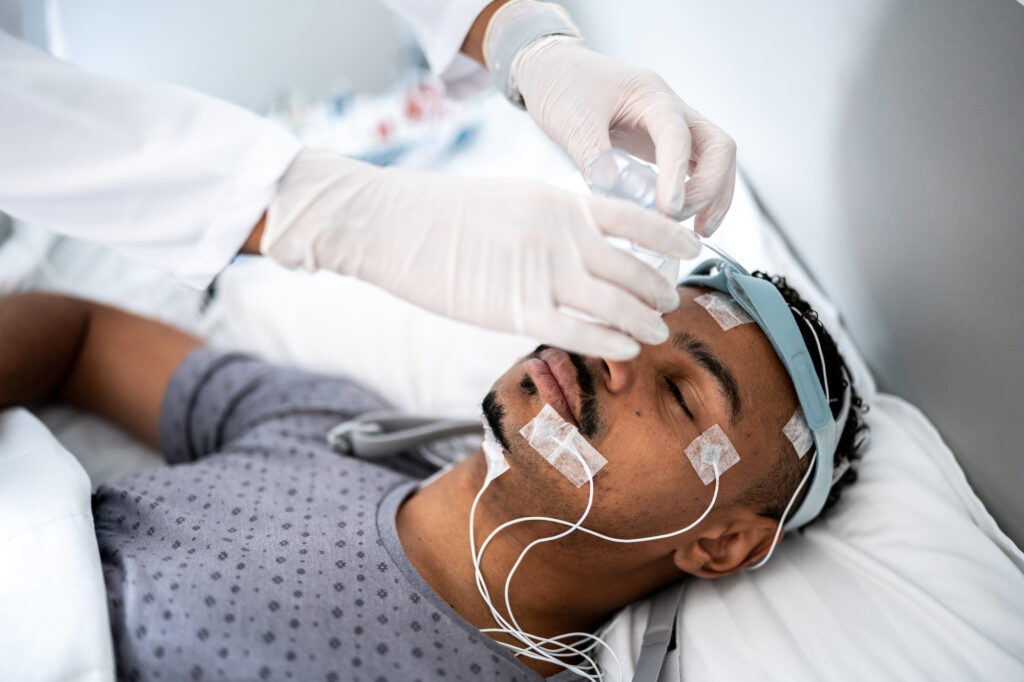Sleep apnea is a serious health condition that affects millions worldwide. In Australia, the approach to diagnosing this disorder has seen a significant shift towards at-home testing, marrying convenience with accuracy. This article delves into the various aspects of sleep apnea, traditional and modern testing methods, and the growing preference for at-home assessments.
Understanding Sleep Apnea
Sleep apnea is characterized by repeated interruptions in breathing during sleep, which can lead to a range of health complications. Understanding its nature, symptoms, and associated risks is crucial for early diagnosis and treatment.
In conclusion, the shift toward sleep apnea test at home Australia combines convenience and accuracy, providing patients with an accessible means to address sleep-related issues. Understanding sleep apnea, the testing process, and how to obtain effective diagnosis will empower individuals to take charge of their health and wellbeing.
The Science Behind Sleep Apnea
At its core, sleep apnea occurs when the upper airway becomes obstructed during sleep, leading to interruptions in breathing. These interruptions can last a few seconds to minutes, and they often happen multiple times throughout the night. This cessation of airflow typically results in diminished oxygen levels in the blood, prompting the brain to awaken and restore normal breathing.
There are two main types of sleep apnea: obstructive sleep apnea (OSA) and central sleep apnea (CSA). Obstructive sleep apnea is the more common form and is often caused by the relaxation of throat muscles during sleep. In contrast, central sleep apnea is a result of the brain’s failure to signal the muscles to breathe. A less common type, complex sleep apnea syndrome, combines elements of both OSA and CSA, complicating diagnosis and treatment. Understanding these distinctions is vital for healthcare providers to tailor appropriate interventions for patients.

Symptoms and Risks of Sleep Apnea
Common symptoms of sleep apnea include loud snoring, gasping or choking during sleep, excessive daytime sleepiness, and difficulty concentrating. These symptoms not only disrupt the sleep of the affected individual but can also have significant impacts on the quality of life. Many people with sleep apnea may not even be aware of their condition, as they often do not recall waking up during the night. This lack of awareness can lead to a prolonged period of untreated symptoms, exacerbating the condition.
The risks associated with untreated sleep apnea are noteworthy. Individuals may experience high blood pressure, heart disease, diabetes, and even stroke. Moreover, sleep apnea can lead to emotional and mental health issues, including depression and anxiety. The relationship between sleep apnea and mental health is particularly concerning, as the constant fatigue and disrupted sleep can create a vicious cycle, worsening both physical and psychological well-being. Recognizing the symptoms early is essential for effective intervention, and seeking medical advice can lead to a range of treatment options, from lifestyle changes to the use of CPAP machines, which help maintain open airways during sleep.
Read about sleep apnea test in Perth at: Get a Comprehensive Sleep Apnea Test in Perth for Better Sleep Health
The Traditional Approach to Sleep Apnea Testing
For years, the standard method for diagnosing sleep apnea involved in-lab sleep studies. These tests have been considered the gold standard in assessing sleep disorders.
In-Lab Sleep Studies
In-lab sleep studies, also known as polysomnography, involve an overnight stay at a sleep clinic where various body functions are monitored. Technicians record vital signs, including heart rate, breathing patterns, and oxygen levels, all while the patient sleeps. This comprehensive evaluation provides in-depth insights into sleep quality and disorders.
While in-lab studies are thorough, they can be inconvenient, often requiring patients to adjust their sleep schedule, travel to the facility, and spend the night in an unfamiliar environment. These factors can contribute to anxiety and may impact the quality of the test results. Moreover, the presence of monitoring equipment and technicians can create an unnatural sleeping environment, which may not accurately reflect a patient’s typical sleep patterns.
The Challenges with Traditional Testing
Despite their accuracy, traditional sleep studies come with several challenges. Long wait times for appointments, the inconvenience of travel, and the uncomfortable setting can deter many from seeking necessary diagnosis and care. Additionally, costs associated with these lab tests can be prohibitive, especially for those without adequate health insurance. The financial burden often leads to delayed diagnoses, which can exacerbate health issues related to untreated sleep apnea, such as cardiovascular problems and daytime fatigue. Find more about fatigue at http://hospitals.aku.edu/pakistan/diseases-and-conditions/Pages/fatigue-and-excessive-sleepiness.aspx
As awareness grows regarding sleep apnea, the demand for more accessible testing solutions has led to innovative approaches in sleep medicine. Home sleep apnea testing (HSAT) has emerged as a viable alternative, allowing patients to undergo testing in the comfort of their own homes. These portable devices monitor key indicators such as airflow, oxygen saturation, and heart rate, providing a more natural sleep environment that can yield more accurate results. Additionally, the convenience of HSAT can significantly reduce the barriers to diagnosis, making it easier for individuals to seek help and receive timely treatment.
The Emergence of Home Sleep Apnea Tests
The rise of home sleep apnea tests (HSAT) marks a significant shift in the field of sleep medicine. By allowing patients to test for sleep apnea in the comfort of their own homes, these solutions offer a new level of convenience. This innovation not only streamlines the diagnostic process but also empowers patients to take charge of their health in a more proactive manner. As awareness of sleep apnea grows, so does the demand for accessible and user-friendly testing options.
How Home Sleep Apnea Tests Work
Home sleep apnea tests are typically portable devices that monitor breathing patterns, heart rate, and oxygen levels throughout the night. Patients are provided with easy-to-use equipment that they can set up themselves before going to bed. This approach means they can rest comfortably in their own environment without the stress of a clinical setting. The simplicity of these devices is a game-changer, as they eliminate the need for specialized training to operate complex machinery.
The equipment usually consists of a nasal cannula to measure airflow, a pulse oximeter for oxygen saturation, and a chest strap to track respiratory effort. The data collected is then analyzed to identify any apneic events and assess the severity of sleep apnea. This data-driven approach allows healthcare providers to make informed decisions about treatment options, which can include lifestyle changes, CPAP therapy, or even surgical interventions in more severe cases.
Benefits of Testing from Home
The advantages of home sleep apnea tests are compelling. Patients can avoid the discomfort associated with spending a night in a sleep lab, and the home environment often leads to more natural sleep patterns. This factor can enhance the accuracy of the results. Furthermore, the ability to conduct the test in a familiar setting can lead to a more relaxed state, which is crucial for obtaining reliable data.
- Convenience: Tests can be conducted at a time that suits the patient.
- Cost-Effective: Home testing is often less expensive than in-lab studies.
- Comfort: Familiar surroundings may reduce anxiety and promote better sleep quality.
Additionally, home sleep apnea tests can significantly reduce wait times for diagnosis. In traditional sleep labs, patients often face long waiting periods for appointments, which can delay necessary treatment. With HSAT, patients can receive their results in a matter of days, allowing for quicker intervention and management of their condition. This rapid response is particularly beneficial for individuals who may be experiencing severe symptoms that impact their daily lives, such as excessive daytime sleepiness and impaired cognitive function.
Moreover, the rise of telemedicine has further enhanced the accessibility of home sleep apnea tests. Patients can easily consult with their healthcare providers remotely to discuss symptoms, receive guidance on test administration, and interpret results. This integration of technology not only promotes better patient engagement but also fosters a collaborative approach to managing sleep health, making it easier for individuals to seek help without the barriers often associated with in-person visits. Click here to read more about technology.

Accuracy of Home Sleep Apnea Tests
While convenience is key, accuracy remains paramount when diagnosing sleep apnea. Understanding the effectiveness of home sleep apnea tests compared to traditional methods is crucial for patients considering this option.
Comparing Accuracy: Home Tests vs Lab Tests
Research shows that home sleep apnea tests can be quite accurate, especially when used for patients with a high probability of having obstructive sleep apnea. However, they may not be suitable for everyone, particularly those with complex sleep disorders or other co-morbid health conditions.
In most cases, home tests effectively identify the presence of significant sleep apnea, allowing for timely treatment interventions. Nonetheless, they may lack some of the comprehensive data a full polysomnography could provide, particularly in differentiating between types of sleep apnea.
For instance, polysomnography can monitor brain waves, oxygen levels, heart rate, and breathing patterns throughout the night, offering a detailed overview of a patient’s sleep architecture. This level of detail is particularly important for diagnosing central sleep apnea or identifying other sleep-related issues that a home test may overlook. Therefore, while home tests can serve as a valuable first step, they may not replace the need for a sleep lab evaluation in more complicated cases.
Ensuring Reliable Results at Home
To ensure reliable results when conducting a home sleep apnea test, patients should adhere to specific guidelines. These include following the provided instructions carefully, using the device correctly, and maintaining their regular sleep habits. Taking these steps helps with obtaining accurate data about their sleep patterns and potential apneic events.
Moreover, consulting with healthcare professionals beforehand can help clarify expectations and address any concerns regarding the testing process. It’s also beneficial for patients to prepare their sleeping environment to minimize disturbances, such as reducing noise and ensuring a comfortable temperature. Additionally, keeping a sleep diary leading up to the test can provide valuable context for healthcare providers, allowing them to better interpret the results and tailor treatment options accordingly.
Furthermore, patients should be aware of the importance of follow-up consultations after the test. Discussing the results with a sleep specialist can help in understanding the implications of the findings and deciding on the most appropriate treatment plan. This collaborative approach ensures that patients receive not only accurate diagnoses but also effective management strategies tailored to their individual needs.
How to Get a Home Sleep Apnea Test in Australia
Obtaining a home sleep apnea test in Australia has become increasingly streamlined and accessible, thanks to several healthcare providers and online platforms specializing in sleep medicine.
Process of Ordering a Home Test
The first step to getting a home sleep apnea test typically involves consulting with a healthcare provider. They will assess your symptoms and determine whether a home test is appropriate. If deemed suitable, a prescription for the test will usually be provided.
Once the prescription is received, patients can order the testing device from authorized suppliers, either through healthcare facilities or directly from sleep apnea testing companies. The ordering process is usually straightforward, involving filling out online forms and providing necessary health information.
What to Expect During the Test
On the night of the test, patients should prepare by following specific instructions regarding the setup of the equipment. After setting up and ensuring the device is comfortable, individuals can go to sleep as usual. It’s essential to maintain a regular nighttime routine to gain the most accurate results.
Once the test is complete, the data will be uploaded for analysis, and the results will be reviewed by a healthcare professional, who will explain the findings and discuss the next steps if sleep apnea is diagnosed.
